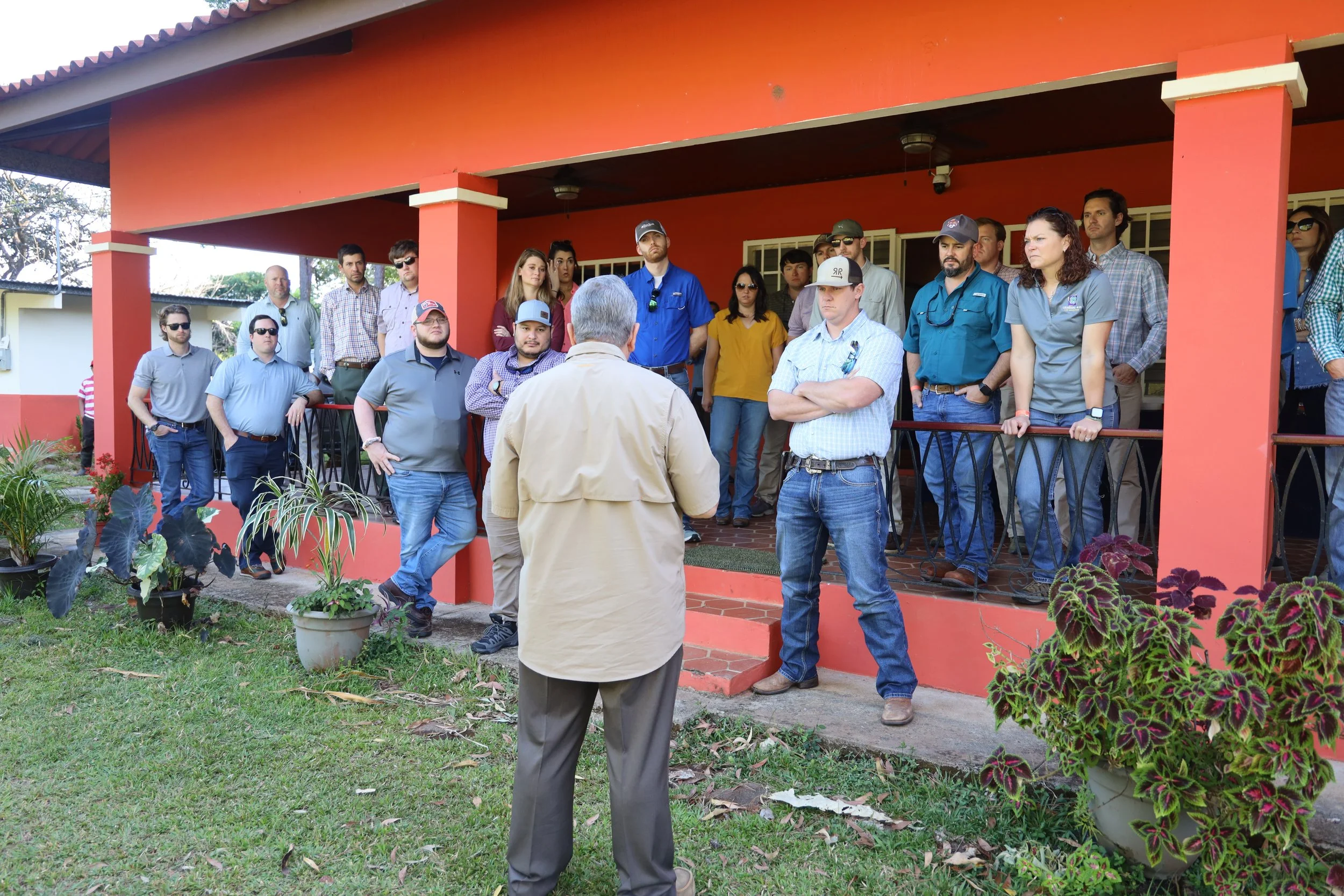A Walk to the River and in the Woods
Ben Guarisco
LSU Ag Leadership Class XVII
Experiencing practical and cultural differences in agriculture has been abundant throughout our trip. We saw how these differences impact management styles and how industry leaders in Panama are successful in the businesses they run. Our visits included a trip to a cattle ranch, followed by a tour a of vertically-integrated teakwood forestry operation. Both of these operations take experience from the states and mesh it with Panamanian culture to be innovators in their field.
LSU Ag Leadership Class XVII talks with Rodrigo Spiegel, a major cattle owner near the city of Santiago de Panama. The class toured his 800 acre ranch on the banks of the San Miguel River. A graduate of Texas A&M University, Spiegel has brougth his Aggie knowledge to the isthmus nation, combining grass management with pure Brahmin genetics, becoming one of the wealthiest landowners in the country.
Part of Rodrigo Spiegel's herd of Brahmin cattle, set against the dramatic backdrop of the mountains of Panama.
The cattle ranch we went to is outside of Santiago de Panama. We passed rotational-grazed pastures with rough-sawn fence posts alongside live trees supporting the wire. Rodrigo Spiegel, the owner, explained his operation raising Brahman cattle and shared that he recently made a large investment on a genetically superior bull for breeding. He is able to distinguish his operation by keeping livestock on his farm to showcase the quality of genetics he produces. Rodrigo has a diverse market with buyers located in Costa Rica and Mexico. He also keeps stock at a ranch in Houston, Texas, not far from his alma mater of Texas A&M University. We also had an opportunity to walk to the San Miguel River that runs through the property, a vital waterway full of tree species and beautiful landscapes.
LSU Ag Leaderhsip Class XVII got a tour of a teakwood plantation, led by owner Jeffrey Duda, an American ex-pat who saw an opportunity in Pananama. The 2,000 acres here represent a tiny fraction of the teakwood business, but they told the class they have found their niche in the market in both delivering to oversees markets and utilizing what others in the business see as waste products.
Our visit to Panama Teak Forestry proved the success of vertical integration in Costa Rica’s forest industry. The company manages around 500 hectares of planted teakwood, which is very small in the comparatively small market of teakwood. This allows them to carve out a niche in the market many of the bigger operations do not fill. Jeff Duda, president of Panama Teak, and his partners are in the process of optimizing their rotation to maximize growth and profitability. They have established 25 years old as their target rotation age for their trees.
Ben Guarisco gives lessons on how to value tree populations to fellow class member Rachel Lee. The prism is used to determine which trees should remain and which trees should be kept in a given area.
Panama Teak encompasses all aspects of a forestry operation, including planting, harvesting and milling while primarily relying on hand labor. Dimensional lumber is used for furniture and boat building. We learned countries like Thailand and India seek out teakwood for cultural significance, providing a market for exports. Although teakwood forestry is very different from the southern U.S. pine production I’m used to, the fundamental principles of forestry hold true in their operation.




